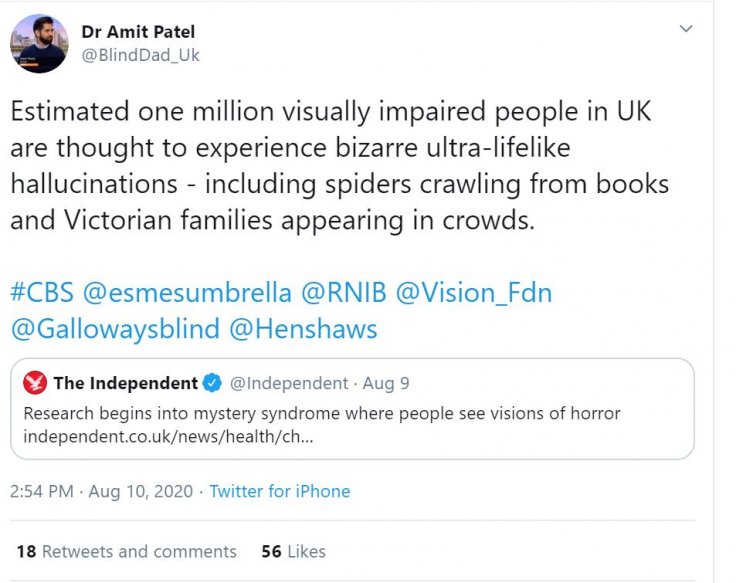Many with partial or complete visual impairment have reported "seeing" spiders crawling, monsters appearing amid friends. And the feeling is constant. While they realize that the visions are not real as they can't see, they cannot shake off the life-like feelings which at times are horrific.
Take the example of Dr Amit Patel. The accident and emergency doctor lost his vision to a hemorrhage in both eyes. While it was already difficult to cope up with the new way of life, what baffled him was the "sight" of a young girl dressed like Samara from The Ring. The bloodied, bruised girl still appears in his vision, practically everywhere.
"I can be working, walking down the street, with the kids, and she'll suddenly be there. She once watched me change my daughter's nappy. She's always on trains," said Patel.
If you thought he was suffering from schizophrenia, you will be wrong. Approximately one million people with partial or complete visual impairments in the U.K. suffer from the condition, known as Charles Bonnet Syndrome (CBS).

What Is Charles Bonnet Syndrome?
Patients with CBS suffer from vivid visions, horrific sights on a daily basis. As per the National Institutes of Health, the U.S., CBS is not related to psychosis or dementia. It involves two types of hallucinations: simple and complex. In simple hallucination, patients can see shapes, patterns while complex includes images of people, animals, plants and vehicles. The episodes can last for seconds to years.
The condition was first described by Swiss philosopher Charles Bonnet in 1760 when his grandfather experienced hallucinations following blindness due to cataract. It was only in 1967 when a Swiss scientist George de Morsier credited Bonnet naming the disease.
While the neurophysiology that can explain the hallucinations is still unclear, the accepted theory is that brain continues to interpret images even in their absence. "Vision loss leads to visual sensory de-afferentation, causing disinhibition, and later spontaneous firing, of the visual cortical regions. Visual deprivation experiments have resulted in similar hallucinations, and functional magnetic resonance imaging (MRI) in patients with CBS has found an association with visual hallucinations and spontaneous activity of the ventral occipital lobe," a research conducted in 2012 suggested.
Further Research to Understand the Cause
The unknown reasons that cause CBS have driven scientists to conduct extensive research. The University of Oxford will soon begin a study into understanding the cause of the disease, the Independent reported.
The researchers hope to destigmatize the condition as many links it with psychiatry and fear coming out as people could question their mental health. The second and most important part of the research will be to lay the groundwork to find a treatment that is not available at present.
"Some people won't go out as much because they don't want to have these visions in public, or they become depressed. They have accidents. You can imagine it's rather distracting suddenly being confronted by a Victorian family as you walk down the street," Judith Potts told The Independent. She founded Esme's Umbrella, a charity dedicated to CBS in the U.K.

She added, "CBS is exacerbated by isolation, by stress, and by fever, all of which we are experiencing at the moment."
Around four million people in the U.K. are expected to suffer from some kind of visual impairment by 2050 and that could result in at least two million diagnosed with CBS. Thus, healthcare experts believe it is high time to understand the condition completely.
The study will be conducted with 20 people — 10 with CBS and 10 without — to understand how chemical properties in the brain react and how to measure that during the research period.
"By looking at that, we can see if there may be an imbalance in chemistry in the visional system that may be a cause of these really weird visions," Holly Bridge, a neuroscience professor who is leading the study, said.
"If we can establish that, then it can become possible to lead to treatment because you could look to develop ways of changing those chemical balances. In the very long term, it may well be that you could develop an appropriate drug to keep those chemical levels in proportion," she added.









